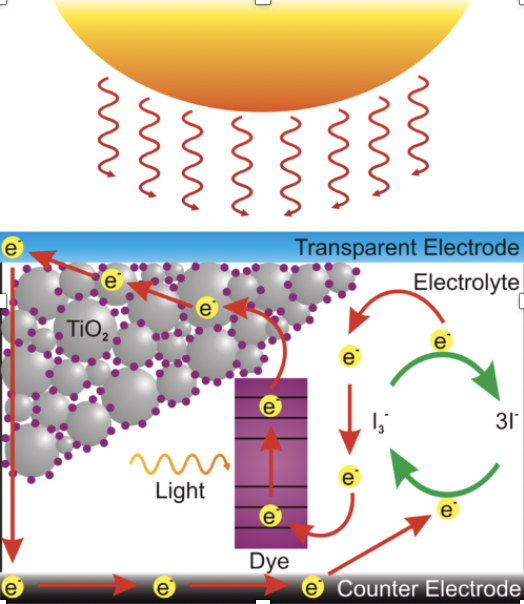Cost Effective Solar Cells Unit Plan

- Students will discuss social, cultural, and economic implications of sustainable solar energy.
- Students will construct and test solar panel arrays to power LED lights, fan motors, and music players
- Students will review circuitry basics and solar cell layers
- Students will analyze and share out power generation results with classmates
- Students will construct and test an oxidized copper sheet solar cell
- Students will share and analyze oxidized copper sheet solar cell data
- Students will construct and test titanium dioxide coated “raspberry juice” solar cells
- Students will collect and analyze titanium dioxide coated “raspberry juice” solar cell data.
- Students will discuss results and draw conclusions about variables that may affect power generation
- Students will visit a solar cell or silicon manufacturing facility and/or engage with guest speakers. Students will learn more detailed solar cell principles and manufacturing techniques involved in solar cell construction
- Students will research chemicals, materials and procedures for their own solar cell designs
- Students will build and present models of their proposed solar cells
- Students will construct and test unique solar cells
- Students will present construction progress and project obstacles
- Students will format solar cell data, draw conclusions, and construct an engineering report as a research poster
Through a series of solar panel and solar cell construction activities, students will learn the basic principles of energy conversion from light energy to chemical & electrical energy. Students will assemble and test pre-constructed solar panels to gain a working knowledge of power generation in parallel and series circuits. Using pre-designed methods, they will then construct two solar cells; oxidized copper sheets and titanium dioxide coated glass plates. Using these known working systems, students will investigate how changes to the method will affect the power generating outcomes in an inquiry-based format.
After exploring known solar cell designs, students then shift to an engineering design project. Students will research and model their own unique solar cell designs. Finally, students will begin their own independent projects to build and test their own solar cells with the goal of creating cheaper, cleaner, or more efficient solutions.
